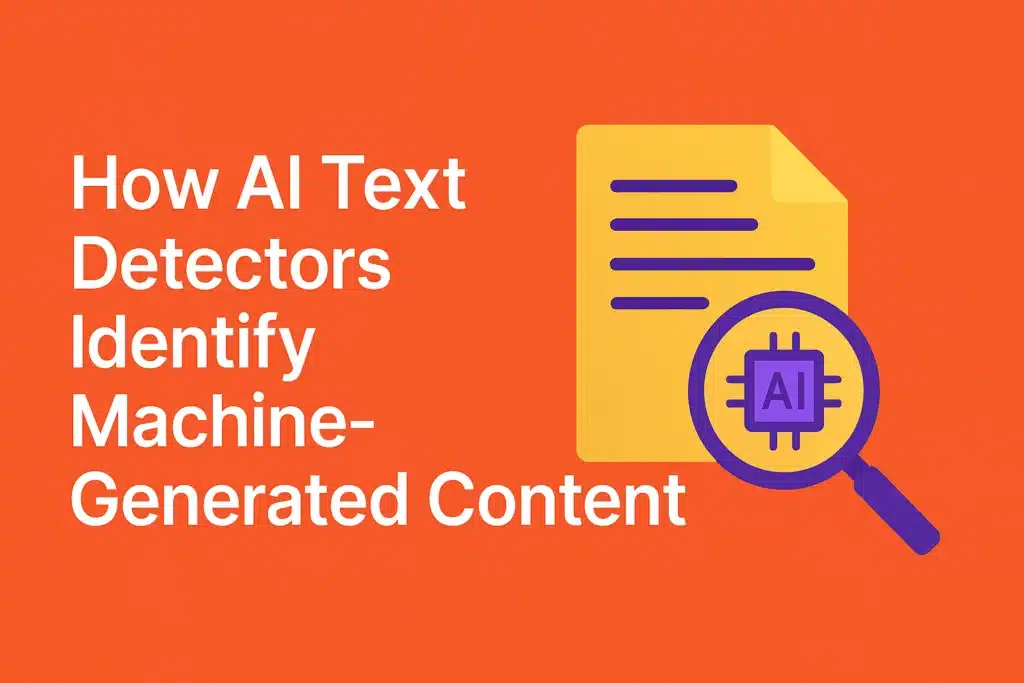People often question whether the text they read is produced by artificial intelligence. Tools that can spot AI aim to protect academic, professional, and online spaces from potential false portrayal. In this post, we look at how these detectors work and why they really matter for maintaining realness.
What is an AI text detector?
An AI text detector is a software tool that checks writing for machine-like patterns. By reviewing sentence structure and predictability, it shows if AI systems were used. Some detectors use advanced language models that track uncommon repeating or evenly consistent styles. They help teachers, recruiters, and online publishers confirm whether a piece was truly created by a human. As machine-generated content arises more often, using an AI text detector becomes important for checking who written the text. These solutions build trust by identifying signs of automated text production, which in the end strengthens confidence in the material.
Purpose and key abilities of AI detectors
AI detectors try to find automated text by checking whether words and phrases fit together in natural ways. They use algorithmic reviews to sort text as human-written or AI-based. These tools let content reviewers spot possible copying, and they also highlight unusual features that suggest machine generation—like consistent sentence length or repetitive word choices. Their main ability is to label text accurately without storing sensitive data. Many groups use them to maintain realness and ensure that writing truly shows human ideas and thought processes.
Why we need to detect AI-generated content
Unmonitored AI-generated text can weaken academic and online standards. According to Surfer, AI content detectors score correctly seven out of ten times on a test of 100 articles (Surfer). However, these tools sometimes wrongly identify real work. In one study, 10–28% of human pieces were flagged as AI-written (Surfer). Despite these errors, detection remains important for maintaining honesty in research and business. It finds low-value content and protects trust and accuracy in fields that rely on authentic communication and trust.
How AI detectors work under the hood
AI detectors compare text against patterns found in both machine-generated and human-authored writing. They process sentences by splitting them into tokens, checking the frequency of words, and searching for predictable structures. If the text matches too closely with known machine sequences, it suggests possible AI involvement. Many detectors also consider perplexity and burstiness, which measure how predictable or varied the phrasing is. Based on these results, the tools may give a likelihood score. That score shows whether text is likely AI-generated or genuine and helps with any deeper review process.
AI training models used in detection
Many AI detectors use large training sets containing both human and machine-generated writing samples. These datasets teach classifiers to spot uncommon repeating and expected word usage. Some platforms report high precision: Originality.ai advertises up to 99% detection for GPT-4 text (Link-Assistant.com). Detectors split text into tokens, then match features against known AI outputs. Google includes similar steps in its own reviews. Although correctness differs between model, regular improvements help these detection systems keep up with new AI writing methods as they change.
Role of linguistic patterns in AI detection
Linguistic markers often show AI usage. Detectors look at word selection, predictability, and repeated phrases to find out whether the text follows a stiff writing. One survey found that 45% of people in the US now apply some form of generative AI (Link-Assistant.com). As AI spreads, certain structures often show up. For example, AI might reuse specific synonyms or keep sentences evenly long. By examining changes and repeated patterns, detectors assign a likelihood that the content comes from a machine. A broader approach includes stylometry, which reviews syntax, word choice, and overall phrase repeating.
Statistical signs that signal AI usage
Statistical signs help identify AI-based text. Detectors check how expected words are—known as perplexity—and how each sentence varies, known as burstiness. If the perplexity is too low, the text might be generated by a machine. One study found that OpenAI’s classifier wrongly labeled AI writing 74% of the time, causing its removal in 2023 (Link-Assistant Blog). Consistent word choice also suggests AI involvement, and expected structures further support that conclusion. Detectors combine these signs to create a final score and flag possible automated work overall.
Best tools to detect AI in writing today
Many platforms scan text for AI traits, each with unique strengths. Some offer copying checks with detection, while others focus on academic or corporate needs. Originality.ai, GPTZero, Crossplag, and Writer.com are common picks in this space. Several providers say high correctness for major models, though results can vary. Some rely on perplexity-based analysis, while others use advanced classifiers. They often show a percentage showing whether content is “likely human” or “likely AI.” The next sections highlight features, reliability, and possible problems to help you or your group choose the right solution.
GPTZero
GPTZero reports strong results, mentioning a 99% correctness rate and over 3,500 school partners (GPTZero). Users enter text and get detailed sentence-by-sentence flags. Its approach considers perplexity and burstiness, helping teachers spot AI in student essays. TechCrunch named GPTZero as the only consistent performer in certain tests. The tool supports multiple AI language models, including GPT-4. Some false positives do happen, so teachers should combine GPTZero’s findings with manual checks. Still, GPTZero continues to be a popular choice for detecting AI-produced material in both classrooms and broader settings.
Originality.ai
Originality.ai specializes in detection and copying scanning in one platform. It reports 98% correctness in its Lite setting and up to 99% with Turbo (Originality.ai). Its coverage includes GPT-3.5, GPT-4, Claude, and others. Many users uses the Chrome extension to check entire websites for AI text. However, some have said that Originality.ai sometimes flags 10–28% of genuine work wrongly, but continuous updates try to reduce those mislabels. This tool works well for professionals who need to quickly scan large volumes of digital copy.
Writer.com AI Content Detector
Writer.com offers an AI Content Detector that tags text as “likely human” or “likely AI.” Its companion features help rewrite text or sharpen wording. Healthcare company Medisolv used Writer to simplify complex reporting, saving days of effort. The tool works with custom terminology sets to keep compliance. It also is good for teams who need a cohesive style across multiple documents. While its detection correctness might not match focused tools, Writer.com offers a broad approach for teams wanting editing abilities plus AI checks in one place.
Crossplag AI Content Detector
Crossplag’s detector focuses on realness in academic and professional text. It mentions Google’s stance that low-quality machine-generated writing can cause ranking penalties (Crossplag). The tool uses a model trained on 1.5 billion limits but currently supports only English. Users simply paste text to see a percentage score that shows likely AI authorship. Crossplag is popular with schools and recruiters who want genuine papers. It remains free, offers easy setup, and will expand language coverage as its platform grows.
HuggingFace AI detectors
HuggingFace offers free detectors based on older GPT-2 patterns. Their AI detection correctness measures around 20% compared with higher success rates from focused tools (Originality.ai). Users enter text through a simple online interface. Because HuggingFace works with GPT-2, newer language models may go undetected. While it helps show basic AI signals, it rarely identifies outputs from advanced GPT-4 or Claude. Even with these limitations, HuggingFace is still a convenient solution for casual checks, and it encourages open-source input that could lead to future improvements.
Conclusion
AI text detectors play an important role in checking whether writing actually comes from human authors. They use factors like repeating, sentence predictability, perplexity, and burstiness. Although these tools are not perfect, many people use them to protect academic honesty, business trust, and online trust. Evolving large-language models such as GPT-4 constantly test detectors to stay updated. At the same time, Google and other platforms watch for low-quality content, whether it is produced by AI or by humans. A balanced approach includes both automated scanning and human insight, giving more reliable text that shows genuine authorship. This combination reduces mistakes and builds trust across many contexts.
FAQs
Below are common questions about finding AI-generated text, addressing issues like tool accuracy, methods for checking student work, possible evasion strategies, trustworthy detection solutions, linguistic telltales, and detection limits. This section explains key points.



